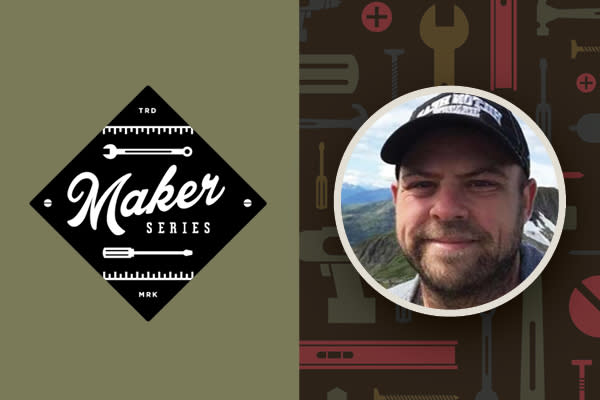In our rapidly changing industry, it can be easy to press on with our heads down, rarely taking a moment to step back and examine what we’re really doing on a daily basis as web designers and developers. Chris Coyier, the co-founder of Codepen, author of CSS Tricks, and creator of the Shop Talk podcast, had us do just that: reflect on what is expected from web designers and developers today, all while building a website together. It was a full house at Sparkbox for our second Maker Series of 2017.
Through building a website together, Chris gave us a bird’s-eye view of the modern web development process. We were able to dig into some of the various roles involved and see just how broad the job of frontend designers and developers has become. There are so many things to learn, and although it may seem overwhelming, it should cause us to build empathy and rely on others to build better websites.
Things Change
It seems as if the job titles for those with careers in the web industry change every few years—if not every few months. Chris made it clear that the frontend designers and developers of today have very different roles, use very different tools, and often write very different code than they did even just a few years ago. While we may think this is obvious (I mean, who uses Flash anymore?), sometimes it can be hard to pinpoint what’s expected from designers and developers these days. With the industry changing so rapidly, it’s easy to constantly feel one step behind.

As designers and developers, we often ask questions like, What tools should I be using? How do I know if certain “best practices” are relevant anymore? and What should I be learning now to prepare for the future of the web? Throughout the day, Chris paused for in-depth discussions that answered these very questions.
From new design tools and the best way to create grids, to topics like accessibility, performance, and progressive web apps, we covered a lot of ground. You can find a list of the tools we discussed in our collaborative notes.
The Need for Empathy
These discussions helped us realize just how many skills and roles are involved in building a successful website today. Design, UX, HTML, CSS, JavaScript, and more, all have to be carefully crafted. To illustrate this further, Chris mentioned a list of some of the skills and roles a developer should be aware of:
The backend
The network
Performance
DevOps
Content Strategy
Databases
Testing
Systems
Servers
Accessibility
Device landscape
Very few—if any—have the skills to be labeled proficient in more than a few of these areas. The days of the “webmaster” are in the past, and as the roles involved with building websites continue to grow, there will be an even greater need for empathy and trust in others. Empathy is something we talk about a lot at Sparkbox, and we believe it’s essential for teams to build together.
“If a project has separate human beings who are ‘Designers’ and ‘Frontend Developers,’ the healthiest projects will involve plenty of back-and-forth between them.” —Chris Coyier
The growing complexity of websites and the fragmenting of roles is daunting and can leave us feeling inadequate. However, there is freedom in knowing that we, as developers, can and should lean on others with different skillsets to deliver the best results possible. Awareness and empathy are key and will allow you to focus your attention on mastering one area without feeling the need to master everything.
The Future Is Bright
After building our website, there was just enough time to quickly discuss what the future of the web might look like. Chris outlined nine areas that he believes all point to the future:
User expectations are on the rise. Users will continue to expect better design, better experiences, faster performance, and the list goes on. Users will also expect more because websites keep doing more, and this has the potential to make it harder for smaller sites to keep up.
New JavaScript is here and is something we can and should be using.
We are not building pages; we are building systems. It seems as if every large organization is moving toward systems, such as style guides and pattern libraries.
The line between native apps and websites is blurring with the rise of progressive web apps and browsers supporting more functionality.
URLs are still a killer feature, and as Chris said, “They are perhaps one of the most important innovations ever.” And if you stop to think about it, it really is remarkable to be able to jump to look at anything imaginable with a single click.
Performance is a key player, and it ties in closely with user expectations. Users expect fast sites.
CSS will get much more modular. CSS will be split in half between universal styles and more contained styles that are bundled with a particular component. This helps reduce code bloating over time.
Being good at HTML and CSS will remain vital. You will still need to know the fundamentals, even with the rise of new technologies.
Build processes will get competitive. Tools that compile and test your code before it goes to production are becoming increasingly important.
...as the roles involved with building websites continue to grow, there will be an even greater need for empathy and trust in others.
The future of the web is bright, and as designers and developers, we have an exciting opportunity to shape the future of the internet. Hearing Chris, a master of his craft, outline what web design and development looks like today, and what he thinks the future holds, was a great reminder of how we need empathy and trust in others to build better websites together.

